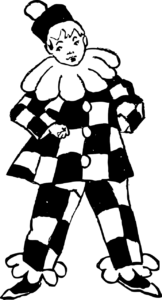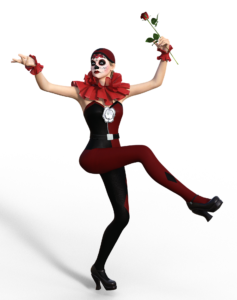Juggling and other clown skills
”
Introduction to Juggling and Other Clown Skills
Juggling and other clown skills Clowning has a rich history that spans generations. While clowning can be a source of fun, laughter, and lightheartedness, it also consists of a variety of difficult skills, from juggling to plate-spinning, and even bite baton manipulation. It takes hours of practice and dedication to become proficient at each skill, and numerous clowns have made the journey before us.
Juggling is roughly defined as the act of manipulating objects for entertainment. This can involve any number of items such as balls, clubs, rings, and so on. Plate spinning is another skill in the clowning arts which consists of balancing a single plate on a stick while spinning it. Bite baton is a skill that involves maneuvering a baton in and out of your mouth. There are also additional skills such as card throwing and devil stick twirling that are equally important and demonstrate the expertise of a talented clown.
In this guide, we’ll be discussing the history of clowning, the equipment needed for each skill, the basics behind juggling and plate-spinning, how to use a bite baton, and finally, other skills associated with clowning.
Origins of Clowning and Juggling and other clown skills
Clowning is said to be one of the oldest art forms around, having originated in Ancient Greece. It was then known as Commedia dell’arte and the performers would use improvisation and slapstick humor to make people laugh. It is believed that juggling was also used during this period, as it was a popular form of entertainment.
Throughout the Middle Ages, clowns, or ‘fools’, were popular at festivals and festivities. During this time, juggling was embraced as its own art form and began to be practiced more often and by more people. Juggling became a popular way to entertain nobles and royalty and was able to encompass many different props.
By the 19th century, clowning had become an established art form and was regularly used within the theatre. As entertainment changed and evolved, clowning was adapted and mixed with juggling to create a thrilling performance. This combination of skills is now part of the contemporary circus tradition.
Juggling does not only require skill and hand-eye coordination, but discipline and focus. When combined with clowning, these skills are important for creating that unique experience that will entertain audiences.

Equipment Needed for Juggling
Juggling is an exciting skill that can easily be picked up by people of all ages. To begin learning, you’ll need a few basic items including juggling balls, plates, and bite batons. Below, we’ll talk about the equipment needed for juggling and how to use them.
Juggling Balls
Juggling balls are the primary item needed when learning how to juggle. You’ll need three different colored balls, ideally weighted between 80-90g each. They should also be smooth and rounded, so they don’t pierce your skin while practice. Before starting to juggle, practice tossing these balls in the air, one at a time, to get used to how they feel.
Plates
Plate spinning is an important skill for clowns to master. For plate spinning, you’ll need a flat plastic plate with a handle, along with a long wooden stick. Use the wooden stick to balance the plate at its center point. Once balanced, start spinning the plate in either direction by applying small amounts of pressure.
Bite Baton
The bite baton is another common type of clown skill. It is usually a short, thick stick with a long extension. When handling the bite baton, hold it close to the body and use the center of the baton as a fulcrum. Perform specific moves by twisting the baton in your hands, and always finish your routine with a flourish.
These are just a few of the items you’ll need for juggling and clown-related skills. With some practice and dedication, you’ll soon become a master juggler, ready to perform in any circus or street show!
Ball-Juggling Basics
Balancing all the balls when juggling can seem like a daunting task. But with practice and patience, anyone can master the basics of ball juggling in no time. The first step is to understand the proper position of the body when juggling.
The body should be held in a relaxed stance with feet slightly apart and knees bent. An important part of juggling is to maintain a relaxed yet focused approach. Your arms should be bent at the elbow and your hands held close to your body in order to catch the balls quickly and accurately.
Once you feel comfortable with your stance, it’s time to start juggling. Begin by grasping two balls in the same hand and balance them on the palm of the hand as if they were one. Then, move the balls from one hand to the other in a continuous motion. As you get better, try to add more balls to your routine.
Practice is key when it comes to juggling. Start slow and gradually increase the speed as you develop your skills. With enough practice, you’ll soon be able to juggle with confidence.

Plate Spinning Basics Juggling and other clown skills
Plate spinning is a classic clown skill that requires patience, flexibility and good coordination. The performance of plate spinning involves carefully balancing one or more plates on the end of a narrow dowel, and using a wooden stick to keep them spinning. It’s a great way to add whimsy and humour to your clown routine.
To get started with plate spinning, you’ll need the following equipment:
- Plates (ceramic or plastic)
- Dowels (metal or plastic)
- Wooden sticks
You’ll need to begin by carefully attaching the dowels to the center of the plates. This may require some trial and error as the dowels must be long enough so that the weight of the plate is distributed evenly across its entire length. You should also make sure that the plate is securely attached to the dowel so that it won’t slip off during the performance.
Once the dowel is attached to the plate, it’s time to begin practicing. To start, hold the plate by the dowel in one hand and the wooden stick in the other. Place the plate on the dowel and use your stick to help spin it in a circular motion. With enough practice, you’ll be able to keep the plate spinning for a few minutes at a time. As you become more adept, you can add additional plates and even attempt to juggle them.
By mastering the basics of plate spinning, you’ll be able to bring a bit of silliness and fun to your clowning routine. With the right equipment and practice, you will soon be spinning multiple plates and adding some real show-stopping moments to your performance.
Bite Baton
The bite baton is a classic clown skill involving the manipulation of a wooden pole. It is used to show off a clown’s dexterity and quick reflexes as they maneuver the baton between their hands. The purpose of this trick is to perform various tricks while flipping and catching the baton with your hands or behind your back.
If you are just getting started with bite batons, here are some basic steps to practice:
- Begin by holding the bite baton in one hand, with your arm extended and hand slightly cupped around the centre of the baton.
- Using your free hand, grab the opposite end of the baton. Now quickly reverse your hands so you can hold onto both ends. You may need to use your body to leverage the weight of the baton for a faster handover.
- To perform more advanced tricks, practice passing the baton behind your back or above your head.
- Finally, end your routine with a flourish by clapping your two hands together to signal the finish of your performance.
Having the necessary hand-eye coordination and dexterity to perform the bite baton trick is essential for any aspiring clown. Practice those skills regularly and you’ll soon be mastering the art of the bite baton!
Additional Skills
Many clowns also demonstrate their skills in other areas, beyond the realm of juggling. Card throwing is a popular skilful trick, where the juggler throws playing cards up into the air and then catches them again, often in creative ways. This particular skill takes practice as it requires control over the speed and technique of the throw.
Another popular display of clowning skill is devil stick twirling. This move involves a stick, usually with two ends that have different colors to help distinguish between them, which is kept airborne by manipulating two hand sticks. This impressive feat creates a lot of visual interest for the audience.
Other similar skills include balancing a broom or mop on your chin, controlling spinning objects like diabolos, and eating fire, all of which are great entertainment for the audience and require practice and skill to perform correctly.
Juggling and other clown skills are a fun and engaging way to impress an audience. They require skill and practice to become proficient, but can add great value to any clown performance. Juggling balls, spinning plates, or twirling bite batons, each move and skill mastered adds another layer of complexity to an act. Without these tricks, the clown’s performance would be incomplete.
The importance of learning juggling and other clown skills cannot be understated. When performed correctly, these tricks can make a performance come alive and galvanize an audience. It requires dedication and hard work to develop proficiency in juggling and other skills, but the end result is always worth it. A skilled clown is able to captivate their audience, creating a memorable experience for everyone involved.
“
